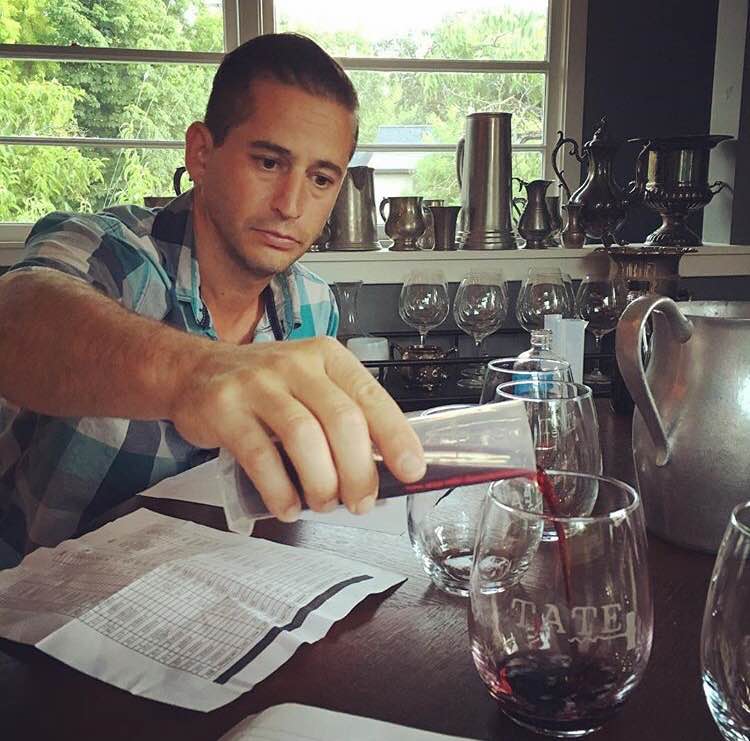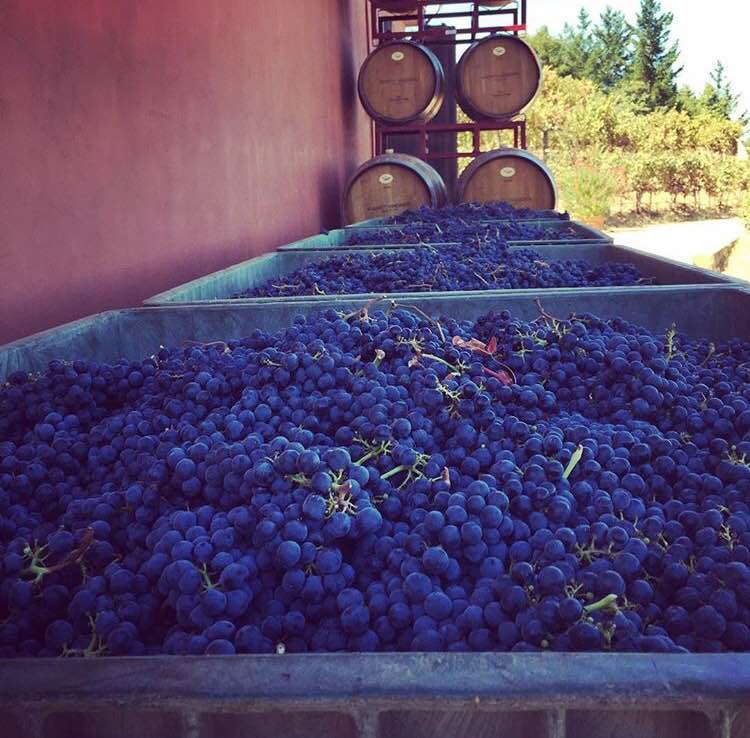
An Interview with David Tate
Oct 14, 2016
WW: When did Harvest start for you and how do you prepare?
DT: Harvest, or the actual picking of the grapes, started on September 7th this year. Yet as anyone in wine production could tell you there is a lot of groundwork to be done prior to the grapes coming in. First off space is very important in a winery. You are not just dealing with the new vintage coming in but one that has just been bottled and one that has to be taken care of prior to focusing everything on harvest.
This year we bottled the 2014 Cabernets and Merlots for both Tate and Barnett in the middle of August. Freeing up hundreds of barrels for space. Then all those barrels, as well as all the new barrels arriving, need to be steamed to sterilize them for the upcoming vintage.
The 2015 Cabernets and Merlots need to be racked, analyzed, and most importantly tasted. They will soon get as much attention as a first child does when the new baby arrives.
Then of course all of the boring stuff, checking and performing maintenance on the mechanical function of every engine, contraption and apparatus.
Personally, I prepare myself by taking my 1970 VW bus to burning man. After that I am ready to lock down and work for two months straight.


WW: You’re mid-harvest, tell me about your average day this time of year?
DT: It starts with an early morning and a lot of coffee. I arrive at the crushpad by 6:30-7am and instantly pull out the pumps and set up our pump-over regiment according to what I wrote out the night before. As the wines are being pumped over and aerated I taste each lot to consider the amount of extraction that has taken place and adjust the timing of the pump overs accordingly. This usually lasts about three hours.
This is where the fun begins.
By 10am we are usually draining the free run wine off of a wine lot that has enough tannin and extraction and typically is finished with fermentation. This is where the fun begins. I will crawl into, or jump into from above, the stainless steel tank that we are fermenting in and with limited oxygen, due to the CO2 produced during fermentation, begin shoveling literally tons of fermented grape skins. After which, while still in the tank, I get drenched with water while pressure washing the inside of the tank.
After crawling out of the tank I program our membrane press to press the fermented grapes according to the variety and flavors I’ve seen from the wine. I then forklift out barrels to put the press wine into. After pressing we then empty it out and crawl into the press to spray out every skin and seed.
If fruit arrives that day we move the hopper and crusher/destemmer out and start moving the handpicked fruit into tank. This can take a few hours.
The afternoon continues with another round of tasting while doing pump overs and racking free run wine to barrel, and/or racking and returning wine to barrel that has finished barrel malo-lactic fermentation. These operations usually take us into the early evening. I then write up the suggested regiment for the next day.
After all this I take a drive to certain remaining vineyards that need to be sampled and walk them looking at their flavor, physiological ripeness, and sugar levels and consider the weather while deciding on whether a picking date needs to be contemplated.
After driving home, I crack open a bottle, typically an older vintage of a vineyard that I have just picked, then reflect and enjoy.
While I sleep I dream of shoveling tanks.


You are bringing in a number of different varietals from various vineyard sites, can you walk me through how the timing works on that?
DT: The key to working with a number of different varietals from various vineyard sites is to treat every year as different. Initially consideration should be given to the weather during budbreak, flowering and veraison, and of course to every day as the grapes ripen. All of this can help me guess at what stage, and which varietal will ripen first. But walking these vineyards, often daily, is the only way to determine what is ready to pick.
That all being said, if one were to place bets, the first grapes to come in for Barnett Vineayards is the Tina Marie Pinot Noir from Russian River, and the first to come in for TATE Wines is typically the Yountville Spring Street Chardonnay.
As these varietals come in there is excitement for the beginning of harvest. A month later when there is a flood of different Cabernet Sauvignon coming in from the three different mountain appellations that I work with, there is terror. Work days can last into the next day’s morning as we are draining, pressing tanks and then filling them minutes after.
One of the philosophies I’ve always had is that if the grapes are ready, then they are ready. We will find somewhere to put them, whether it is in a stainless steel tank or ten macro bins.
You are making wine for two different brands, how do you balance that?
DT: The Tate Wines are made up at Barnett Vineyards. However when I am in the middle of harvest I never give any thought to which brand I am working with. I consider the vineyard, variety and the flavors the year is giving me and consider what needs to be done to guide the grapes through to reflect the varietal and vineyard. Separation of vineyard blocks is already done within each brand, which of course keeps the wine and fruit from each brand separated. As harvest winds down and the dust settles the wine begins to develop and I get to see how all my children are doing.
Lastly, what are your initial impressions of the 2016 vintage?
There are some wineries that always say it is the best year ever. The yield is on point and the flavors, color and tannins that have been showing are spectacular.
My impressions of the 2016 vintage so far is five stars.

